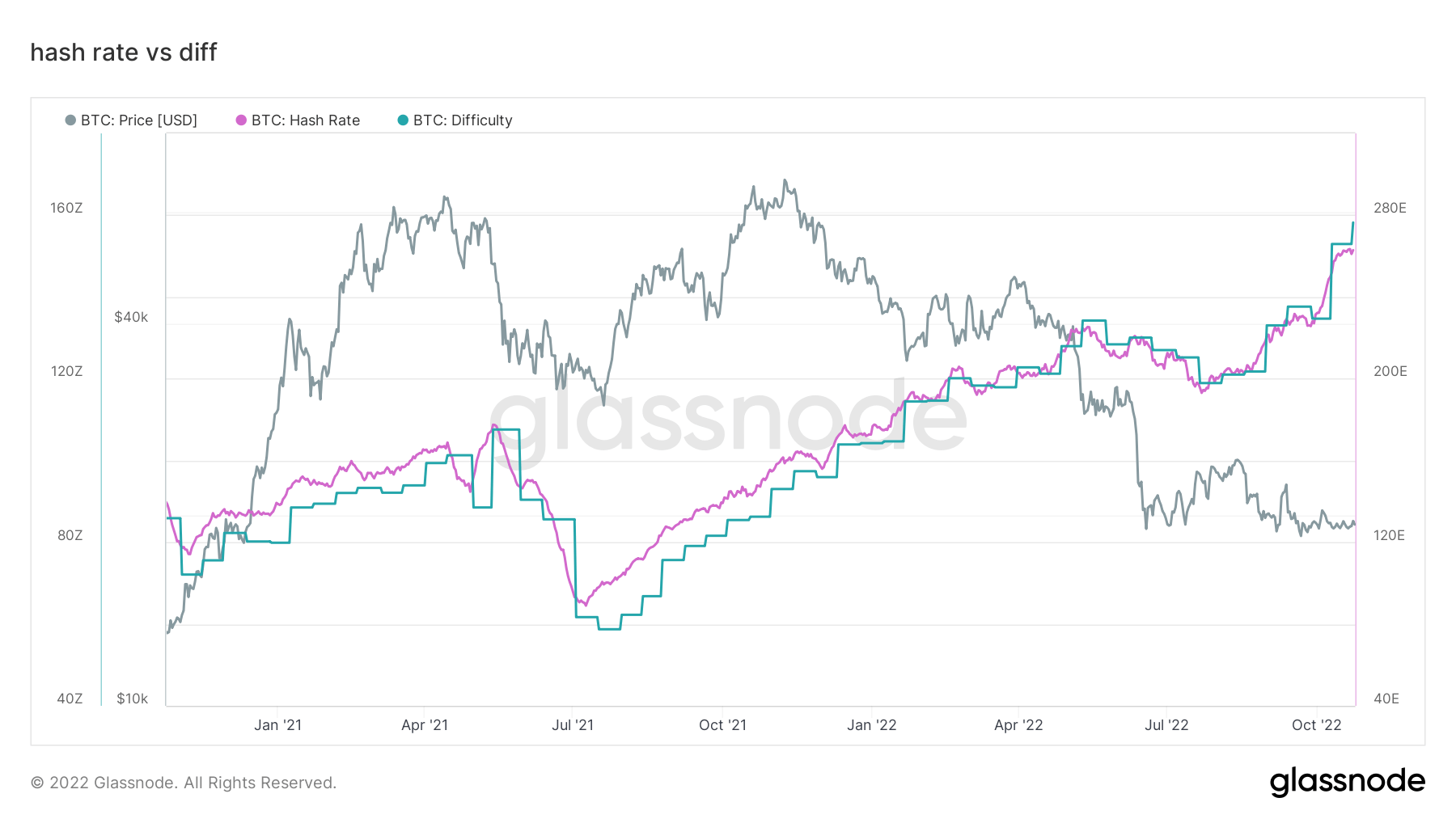This has been the year of mining difficulty and hash rate, as they kept increasing to record new all-time highs (ATH) despite the declining trend in Bitcoin (BTC) price, according to data analyzed by CryptoSlate.
Mining difficulty refers to miners’ chance of finding the required hash code to mine one block. Hash rate, on the other hand, measures the computational power required to find one hash code. Therefore, increasing the mining difficulty pushes the hash rate up and vice versa.

Hash rate and difficulty have increased exponentially since the year’s beginning. The chart above shows the hash rate with the pink line and the mining difficulty with the turquoise one.
This year’s first ATH in mining difficulty was recorded on Jan. 21, when it increased by 9.32 % and reached 26.64 trillion. Almost two weeks later, on Feb. 18, another spike in difficulty recorded a new ATH at 27.97 trillion. Despite falling Bitcoin prices and the tumbling market, the hash rate and mining difficulty continued its increase at the same pace, recording a new ATH almost every few weeks until May 2022.
For a short period between May and September, both the hash rate and difficulty fell. However, they remained above the year’s first ATH level at 26.64 trillion. In September, an upwards surge in both indicators started again when the mining hash rate increased by 60% in 24 hours. It continued to increase and recorded new ATH levels on Oct. 3 ct. 5. This increase was followed by a 13.5% surge in mining difficulty on Oct. 10.
The final increase of the year was recorded on Oct. 24, when Bitcoin mining difficulty increased another 3.4% and recorded a new ATH at 36.84 trillion. The hash rate is holding at 260 EH/s at the time of writing and is yet to respond to the soaring mining difficulty.
Reasons behind the hash rate increase
There is no one reason behind the increase in the hash rate. Essentially, the hash rate increases as a result of an increase in the number of miners, a couple of reasons can be listed when explaining the exponential growth of the number of miners.
One of the reasons could be because of the Ethereum (ETH) merge, which took place at the end of September. With the merge, the Ethereum network switched its Proof-of-Work system to a Proof-of-Stake one, which left Ethereum miners out of work. Most Ethereum miners likely switched to Bitcoin mining, which could have recorded a significant increase in the number of Bitcoin miners.
During…
Click Here to Read the Full Original Article at Bitcoin (BTC) News | CryptoSlate…
























